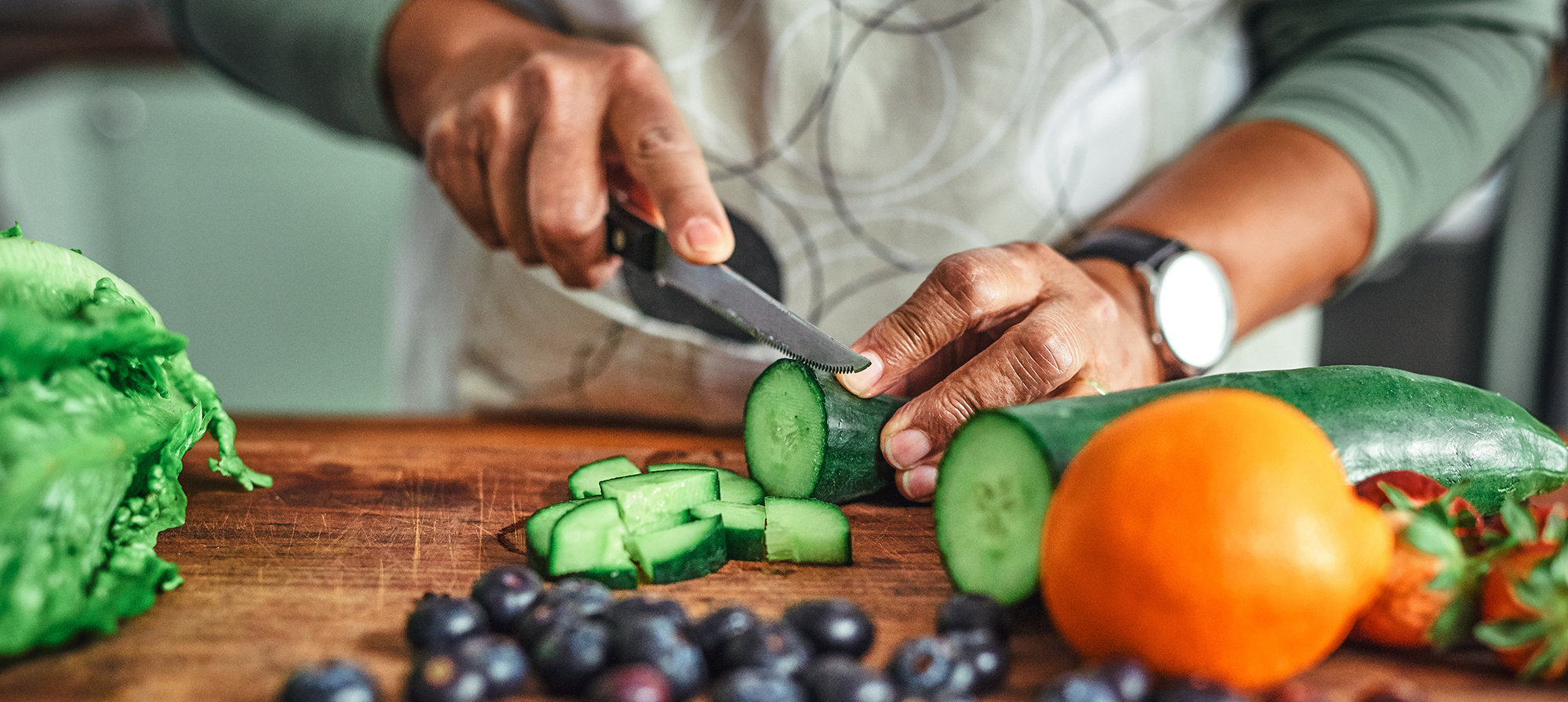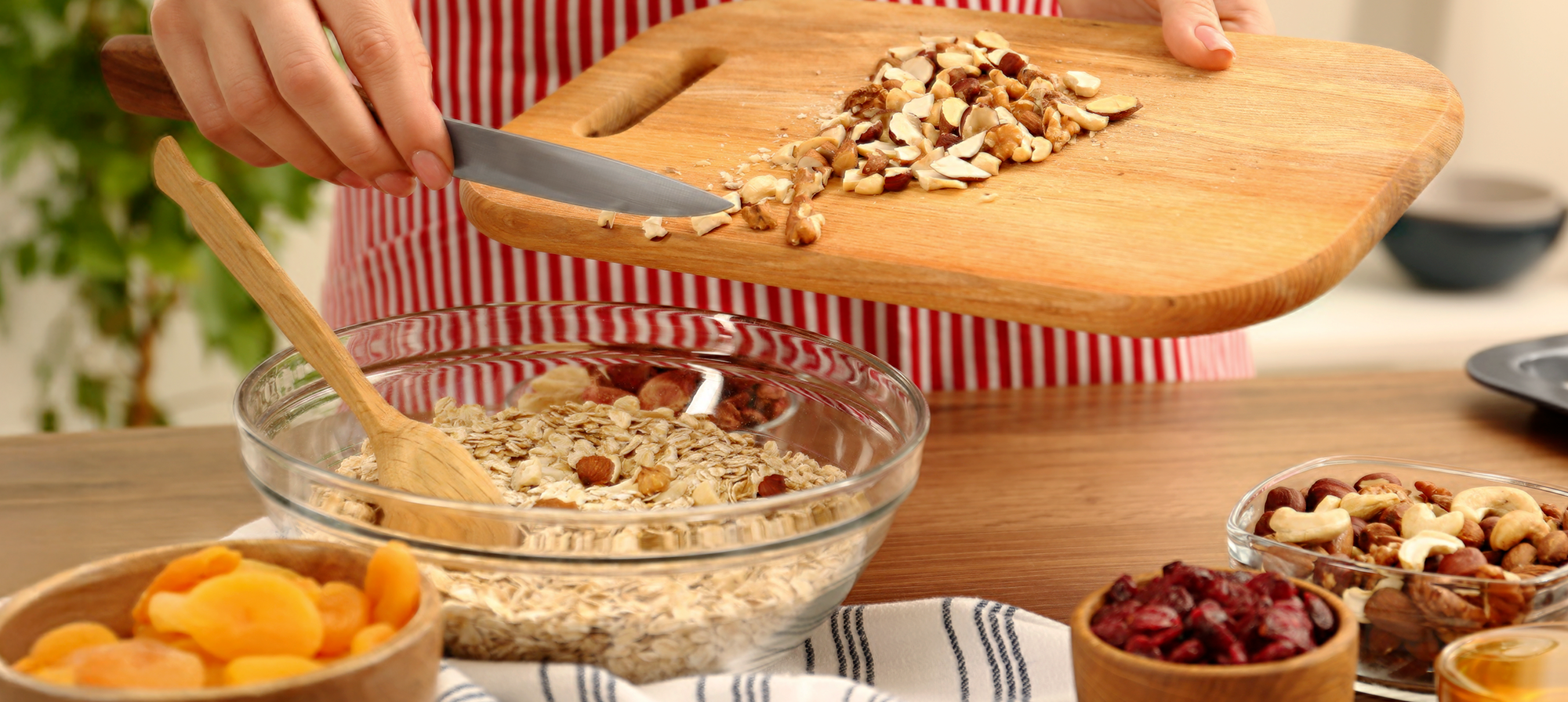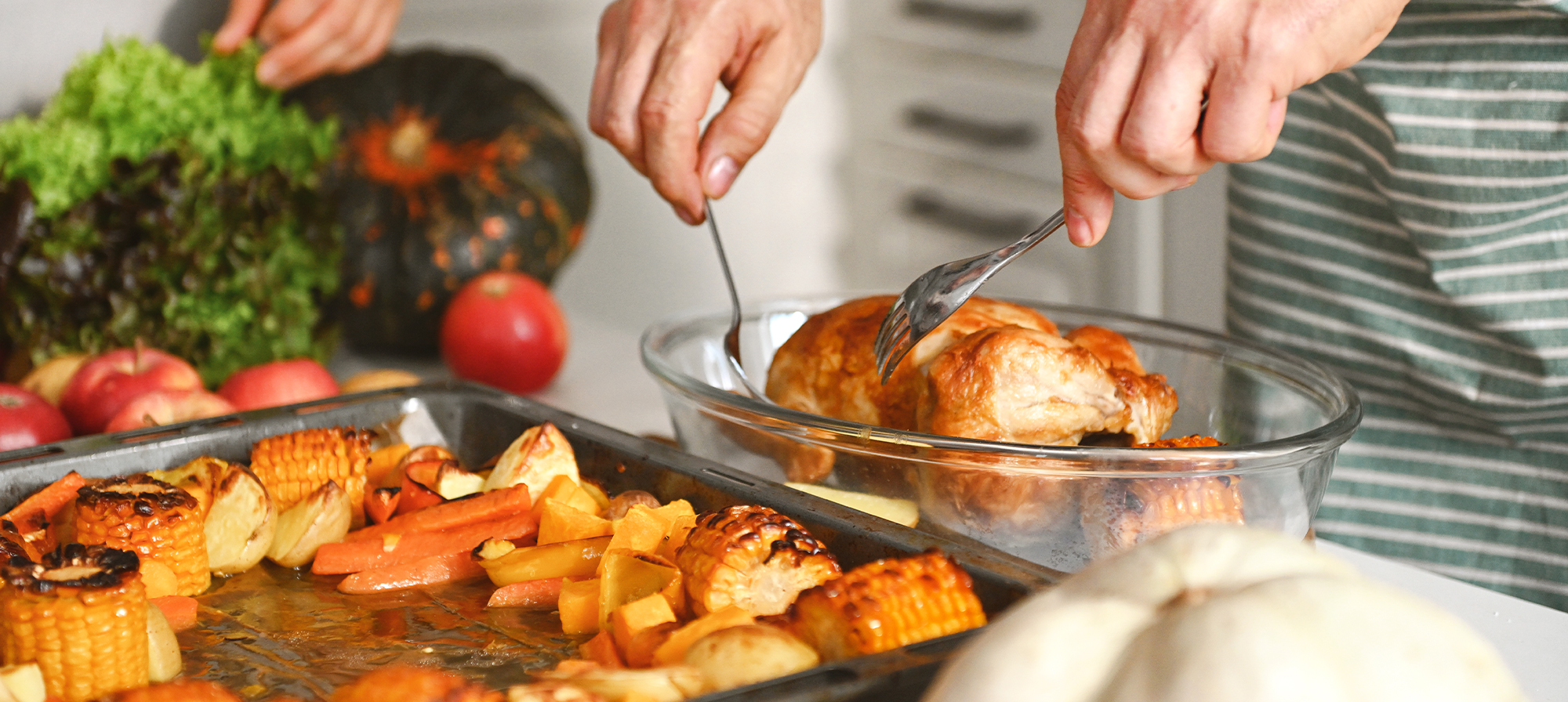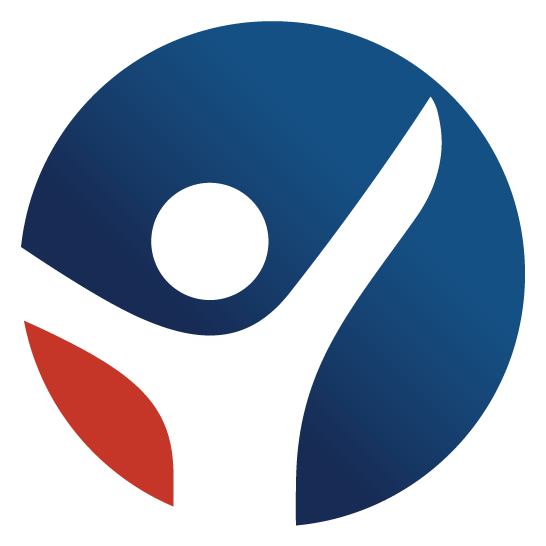A balanced diet is your best defense against nutrient deficiencies. Find out which nutrients tend to decline with age and how you can keep them at healthy levels.
Eating a nutrient-rich diet is important at every age, but it becomes especially key to supporting healthy aging. That’s because some vitamins and minerals may more commonly drop to lower-than-healthy levels with age.
Paying attention to your food choices is a great first step to take in caring for yourself since what you eat affects all your body’s systems. Choosing nutrient-rich foods helps build a strong foundation for a healthy body and mind. One way it does this is by helping to prevent deficiencies in certain vitamins and minerals. Learning about these essential nutrients is one of the first steps to keeping them at healthy levels. That, in turn, can help you stay active and healthy as you age.

What is a nutrient deficiency?
A nutrient deficiency happens when your body lacks a specific vitamin or mineral essential for maintaining health. This can lead to issues like fatigue, aches, and an increased risk of illness, among other symptoms. It can also affect your body's ability to perform certain functions. Sometimes you might not notice any symptoms at all. Your doctor can conduct a blood test to identify any specific deficiencies. It's important to discuss any symptoms or conditions with your doctor before starting supplements or new diets. Often, mild deficiencies can be corrected by consuming the right foods.
 Common nutrient deficiencies in older adults
Common nutrient deficiencies in older adults
Nutrition needs vary throughout each stage of life. The recommended daily allowance (RDA) is useful for knowing how much of a vitamin or mineral you need each day, based on your age and gender. Adequate intake (AI) is also used when RDA cannot be determined. AI is an estimate of how much of a nutrient you need, while RDA is a more precise recommendation.
Nutrient deficiencies become more common with age for several reasons. A slower metabolism or digestion troubles may reduce your appetite. Your body may also not absorb certain nutrients as well anymore. A higher risk of dehydration can also lead to nutrient loss. Certain health conditions and medications may also deplete your body’s levels of certain nutrients.
Here is a list of the vitamins and minerals that are more commonly lacking in many older adults’ diets. Use this guide to learn how much of each nutrient you may need, as well as the foods high in them:
- Vitamin D. Many Americans (about 42 percent) do not get enough vitamin D. And as you age, your kidneys are less able to process it. Vitamin D helps your body absorb calcium and build strong bones. Low levels can lead to fatigue, muscle weakness, joint pain, and risk of fractures. Getting enough sunlight each day on your skin is also key to supporting vitamin D levels.
- RDA for ages 19-70: 15 micrograms (600 IU)
- RDA for ages 71 and up: 20 micrograms (800 IU)
Best food sources for Vitamin D: Fatty fish (cod, salmon, mackerel, sardines), beef liver, and egg yolks. You can also get vitamin D from certain foods that have it added in. These include fortified orange juice (no added sugar), tofu, breakfast cereals, and milk (both dairy- and plant-based milks with vitamin D added). Just make sure the words “fortified with vitamin D” are on the label. 
- Calcium. This mineral is the most abundant in the human body. Studies have found that our stomachs absorb less calcium with age. Calcium is vital for bone health. It also helps keep your heart and nerves healthy.
- RDA for ages 31-50: 1,000 milligrams
- RDA for ages 51 and up: 1,200 milligrams
Best food sources for calcium: Leafy green veggies, yogurt, cheese, milk, and salmon

- Potassium. This mineral is one of 7 primary electrolytes in the human body. Potassium and sodium work together to maintain your body’s fluid balance. The right amount of potassium is vital for heart and kidney health. And it helps keep blood pressure stable. Ask your doctor if you are on medications that can raise potassium levels.
- AI for women ages 19 and up: 2,300 milligrams
- AI for men ages 19 and up: 3,400 milligrams
Best food sources for potassium: Fruits (cantaloupe, kiwi fruit, bananas), vegetables (sweet potatoes, spinach), meat, milk, grains, and legumes (white beans, lima beans)

- Iron. Your body needs iron to make hemoglobin, which carries oxygen through your blood. Iron also supports muscle function and helps you make energy. Low levels of this mineral can leave you feeling tired or weak.
- RDA for ages 31-50: 18 milligrams
- RDA for ages 51 and up: 8 milligrams
Best food sources for iron: Moderate amounts of red meat, poultry, eggs, fortified bread, green vegetables, and fruits

- Vitamin B12. One of the 12 B vitamins, B12, plays a role in making new DNA and converting food to energy. It also supports your nerves and red blood cells. It is mostly found in animal proteins, but certain plant-based foods also contain B12. Deficiency is most common in adults over 50.
- RDA for all ages and genders: 2.4 micrograms
Best food sources for vitamin B12: Meat, poultry, fish, milk, cheese, nutritional yeast, seaweed (nori), fortified cereals, and soymilk. Other sources include fermented foods such as tempeh, kefir, kombucha tea, and miso.

- Iodine. This mineral helps make thyroid hormones that control how fast your body uses energy. These hormones support brain development and help cells make food into energy. Low iodine can lead to thyroid disorders. Use iodized salt to make sure you get enough iodine, especially if you do not eat much dairy, eggs, or seafood. Ask your doctor how much salt is right for you.
- RDA for all ages and genders: 150 micrograms
Best food sources for iodine: Iodized salt, seafood, seaweed, and dairy

4 tips to help prevent deficiencies
Staying well-nourished is key to preventing nutrient deficiencies. Here are some tips to help you get the essential nutrients your body needs. By following these strategies, you can fill in some nutrient gaps, support longevity, and live a more vibrant life.
- Focus on the 5 food groups. To make sure you get the nutrients you need, choose a variety of foods from these groups: fruits, vegetables, whole grains, proteins, and dairy. Try to limit added sugars and preservatives.
- Talk to your doctor about your nutrient needs. Some older adults might not eat enough nutrients and/or calories. Others may need to focus on limiting saturated fats, salt, and sugar. Your doctor can tell you how to adjust your diet depending on any health issues or medications you’re taking. If necessary, they can also suggest a multivitamin or other supplements.
- Share meals with friends and family. If you find that you skip meals, overeat, or choose less healthy foods, it can be helpful to share mealtimes with loved ones to support healthy eating habits and help you look forward to meals. Plus, everyone can bring a nutritious dish to lighten the cooking load. Or you can even cook together!
- Have quick and easy recipes at the ready. We all run short on time and energy sometimes. So quick but healthy meals can be a lifesaver. Find some yummy one-pot/pan recipes that feature most (if not all) of the five food groups above. (See recipe below.)
Embracing nutrient-rich foods becomes a valuable tool for maintaining your health and vitality. Use your knowledge of the power behind vitamins and minerals to motivate your daily choices. Doing so can help you address any nutrient deficiencies that could harm your health. Think of each meal as a chance to fuel your body with the nutrients it needs to thrive, so you can enjoy life to the fullest. Here’s a tasty breakfast recipe that can do just that.
Spinach and Kale Breakfast Casserole 
Ingredients
- ¾ cup, fresh raw kale, chopped (stems removed)
- ¾ cup, fresh raw spinach, chopped
- 1 tablespoon olive oil
- ½ onion, chopped
- 2 cloves garlic, minced
- ¼ cup water
- 8 eggs
- 1 cup milk
- ½ cup cheddar cheese, shredded
- teaspoon iodized table salt
- ¼ teaspoon fresh ground black pepper
- 1 cup toasted whole grain bread, cubed
Directions
- Preheat oven to 350 degrees.
- Rinse and drain kale and spinach and set aside.
- Place olive oil, onion, and garlic in a non-stick skillet and sauté until lightly browned.
- Add water, kale, and spinach to the skillet and cook until the greens are just wilted.
- In a separate bowl, fork scramble the eggs until yolk and white are combined.
- Add milk, cheese, salt, and pepper and stir to combine.
- Add kale, spinach, onion, garlic, and bread cubes and stir until just combined.
- Place mixture into a greased 9 x 9 baking pan.
- Bake until a toothpick in the middle comes out clean, about 20-30 minutes.
Makes 6 servings
| Nutrient Analysis |
| Calories 197 |
| Protein: 12.9g |
| Carbohydrates: 8.5g |
| Fat: 12.9g |
Vitamins and Minerals Per Serving:
- Vitamin A: 344.5 mcg
- Vitamin C: 16.5 mg
- Vitamin D: 0.9 mcg
- Vitamin B12: 0.42 mcg
- Calcium: 112.2 mg
- Iron: 0.33 mg
- Iodine: 11.8 mcg
- Magnesium: 3.3 mg
- Phosphorus: 69.2 mg
- Potassium: 65.2 mg
Not a Silver&Fit® member? Learn more about everything the program has to offer, including more helpful healthy living tips like this, here on our website.
This information is not intended to take the place of regular medical care or advice. Please check with your doctor before using this information or beginning any self-care program. Images used for this article do not depict any members of the Silver&Fit program.
References
Adlakha, K. (2021, September 5). Nutritional supplements & deficiency signs for the elderly. REAN Foundation. https://www.reanfoundation.org/most-common-nutrient-deficiencies-in-older-adults/
Better Health Channel. (2017, July 9). Nutrition needs when you’re over 65. Better Health Channel. https://www.betterhealth.vic.gov.au/health/healthyliving/Nutrition-needs-when-youre-over-65
FDA. (2024). Daily value on the nutrition and supplement facts labels. FDA. https://www.fda.gov/food/nutrition-facts-label/daily-value-nutrition-and-supplement-facts-labels
Forrest, K. Y. Z., & Stuhldreher, W. L. (2011). Prevalence and correlates of vitamin D deficiency in US adults. Nutrition Research, 31(1), 48–54. https://doi.org/10.1016/j.nutres.2010.12.001
Harvard Health Publishing. (2024, July 24). The best foods for vitamins and minerals. Harvard College. https://www.health.harvard.eduwww.health.harvard.edu/staying-healthy/the-best-foods-for-vitamins-and-minerals
Harvard T.H Chan School of Public Health. (2012, September 18). Vitamins and minerals. The Nutrition Source; Harvard College. https://nutritionsource.hsph.harvard.edu/vitamins/
Kassis, A., Fichot, M.-C., Horcajada, M.-N., Horstman, A. M., Duncan, P. I., Bergonzelli, G., Preitner, N., Zimmermann, D., Bosco, N., Vidal, K., & Donato-Capel, L. (2023). Nutritional and lifestyle management of the aging journey: A narrative review. Frontiers in Nutrition, 9. https://doi.org/10.3389/fnut.2022.1087505
Kiani, A. K., Dhuli, K., Donato, K., Aquilanti, B., Velluti, V., Matera, G., Iaconelli, A., Connelly, S. T., Bellinato, F., Gisondi, P., & Bertelli, M. (2022). Main nutritional deficiencies. Journal of Preventive Medicine and Hygiene, 63(2 Suppl 3), E93–E101. https://doi.org/10.15167/2421-4248/jpmh2022.63.2S3.2752
National Council on Aging. (2024, February 13). How older adults can detect and prevent malnutrition. https://www.ncoa.org/article/10-ways-malnutrition-can-impact-your-health-and-6-steps-to-prevent-it/
National Institute of Health Office of Dietary Supplements. (n.d.). Nutrient recommendations and databases. National Institutes of Health. https://ods.od.nih.gov/HealthInformation/nutrientrecommendations.aspx
National Institute on Aging. (2021, January 2). Vitamins and minerals for older adults. https://www.nia.nih.gov/health/vitamins-and-supplements/vitamins-and-minerals-older-adults#recommended-sodium-intake-for-older-adults
National Library of Medicine. (2019). Minerals. MedlinePlus. https://medlineplus.gov/minerals.html
National Library of Medicine. (2023, January 19). Vitamins. MedlinePlus. https://medlineplus.gov/ency/article/002399.htm
Norman, K., Hab, U., & Pirlich, M. (2021). Malnutrition in older adults—recent advances and remaining challenges. Nutrients, 13(8), 2764. https://doi.org/10.3390/nu13082764
Nutrition and Aging Resource Center. (n.d.). The benefits of eating with others: Connecting nutrition and socialization for better health. https://acl.gov/sites/default/files/nutrition/BenefitsOfEatingTogether_IG-508.pdf
Oregon State University. (2021, December 13). Nutrition for older adults: Preventing malnutrition as the body ages. OSU Extension Services. https://extension.oregonstate.edu/catalog/pub/pnw-767-nutrition-older-adults
Stanford, F. C., & Anekwe, C. (2021, October 8). Surprising findings about metabolism and age. Harvard Health. https://www.health.harvard.edu/blog/surprising-findings-about-metabolism-and-age-202110082613
U.S. Department of Agriculture. (n.d.-a). Food group gallery. MyPlate. https://www.myplate.gov/eat-healthy/food-group-gallery
U.S. Department of Agriculture and U.S. Department of Health and Human Services. (n.d.). Food sources of potassium. Dietary Guidelines for Americans. https://www.dietaryguidelines.gov/food-sources-potassium
U.S. Department of Agriculture. (n.d.-b). Older adults. MyPlate. https://www.myplate.gov/life-stages/older-adults
This article was written by Celina Johnson, edited by Kimberley Reynolds, and clinically reviewed by Elizabeth Thompson, MPH, RDN, on February 11, 2025.






